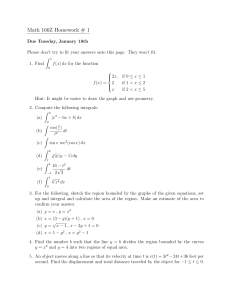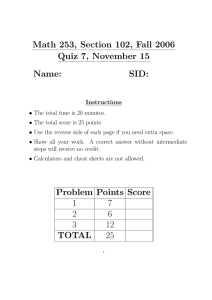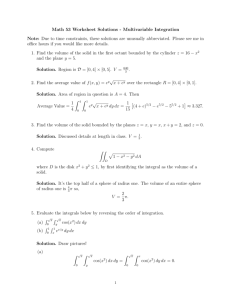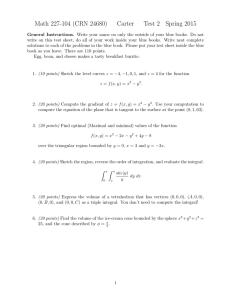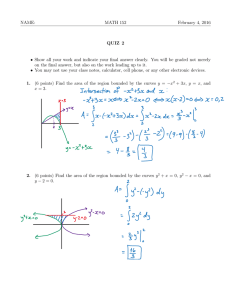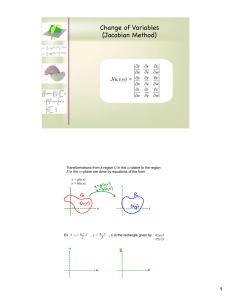MATH261 EXAM III FALL 2007 NAME: SECTION NUMBER:
advertisement
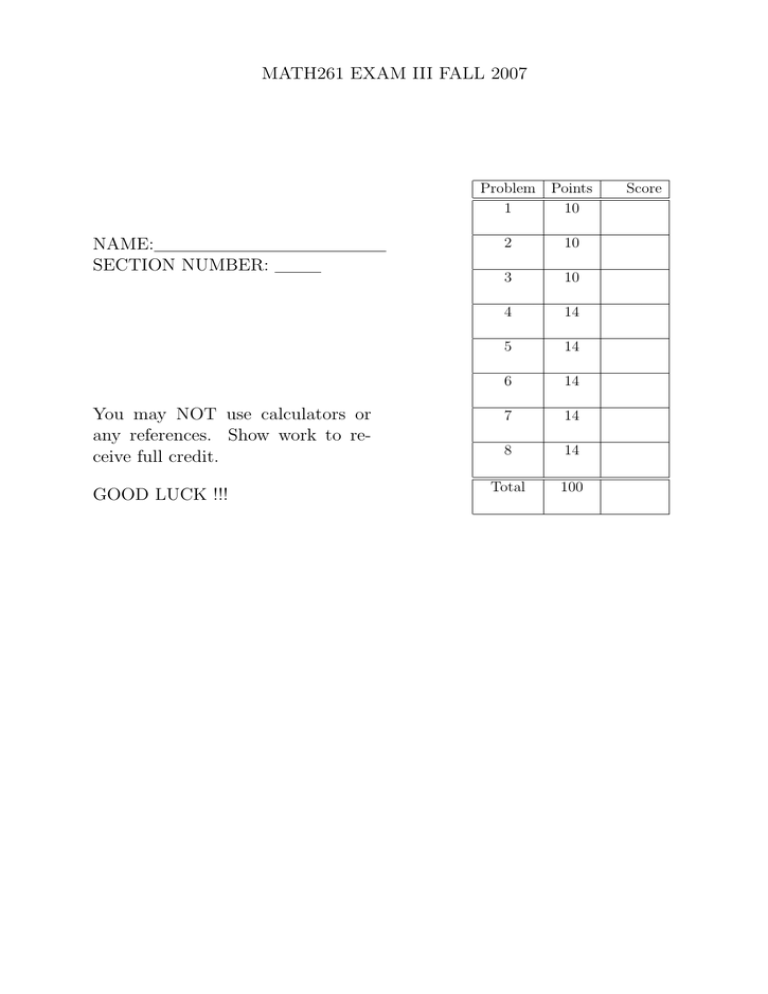
MATH261 EXAM III FALL 2007 Problem Points 1 10 NAME: SECTION NUMBER: You may NOT use calculators or any references. Show work to receive full credit. GOOD LUCK !!! 2 10 3 10 4 14 5 14 6 14 7 14 8 14 Total 100 Score 1. (a) Sketch the region in the xy-plane that is bounded by the graphs of y = 5 − x2 and y = 9 − 2x2 . Within the region, include either a vertical or horizonta line segment with the gridpoints defined in terms of one variable. Find the points of intersection. (b) Set up and evaluate the integral that represents the mass of this region if the density is equal to the distance from the y-axis. Z √ Z Z √ π/2 3 π/2 2. Consider 0 x sin(y 2 ) dz dy dx. 1 (a) Graph the volume associated with the limits of integration. Assuming that dV = dz dx dy, include a line segment with the endpoints defined in terms of two variables. Next, project the 3D graph onto the appropriate two dimensions. On the 2D graph, include a line segment with the endpoints defined with one variable. (b) Evaluate the integral for dV = dz dx dy. 3. (a) Consider the volume bounded by the paraboloid x2 + y 2 + z = 6, the cone z = q x2 + y 2 , and inside the cylinder x2 + y 2 = 1. Graph the volume. (b) Assuming the volume has constant density δ(x, y, z) = κ, find the mass, x̄, ȳ and z̄. 4. Consider the region R bounded on the outside by the circle r = 1 and on the inside by the cardiod r = 1+cos θ. Graph r = 1+cos θ in the rθ-plane. Next, graph r = 1+cos θ and r = 1 in the xy-plane. Find the area of R. 5. Evaluate the following integral where D is the region bounded by the semicircle x = √ 2 a − y 2 . Include a sketch of D. Z Z e−x 2 −y 2 dA = D 6. Consider the volume E enclosed by x2 + y 2 + z 2 = 4 lying above the plane z = 1. Set up but DO NOT evauluate the triple integral that represents the volume in spherical coordinates. For order, assume dρ dφ dθ. Include a sketch of the region. 7. Using the Jacobian, find the area of the ellipse x2 y 2 + = 1. 16 9 √ 8. Integrate f (x, y, z) = − x2 + z 2 over the circle r(t) = (a cos t)j + (a sin t)k where 0 ≤ t ≤ 2π.
